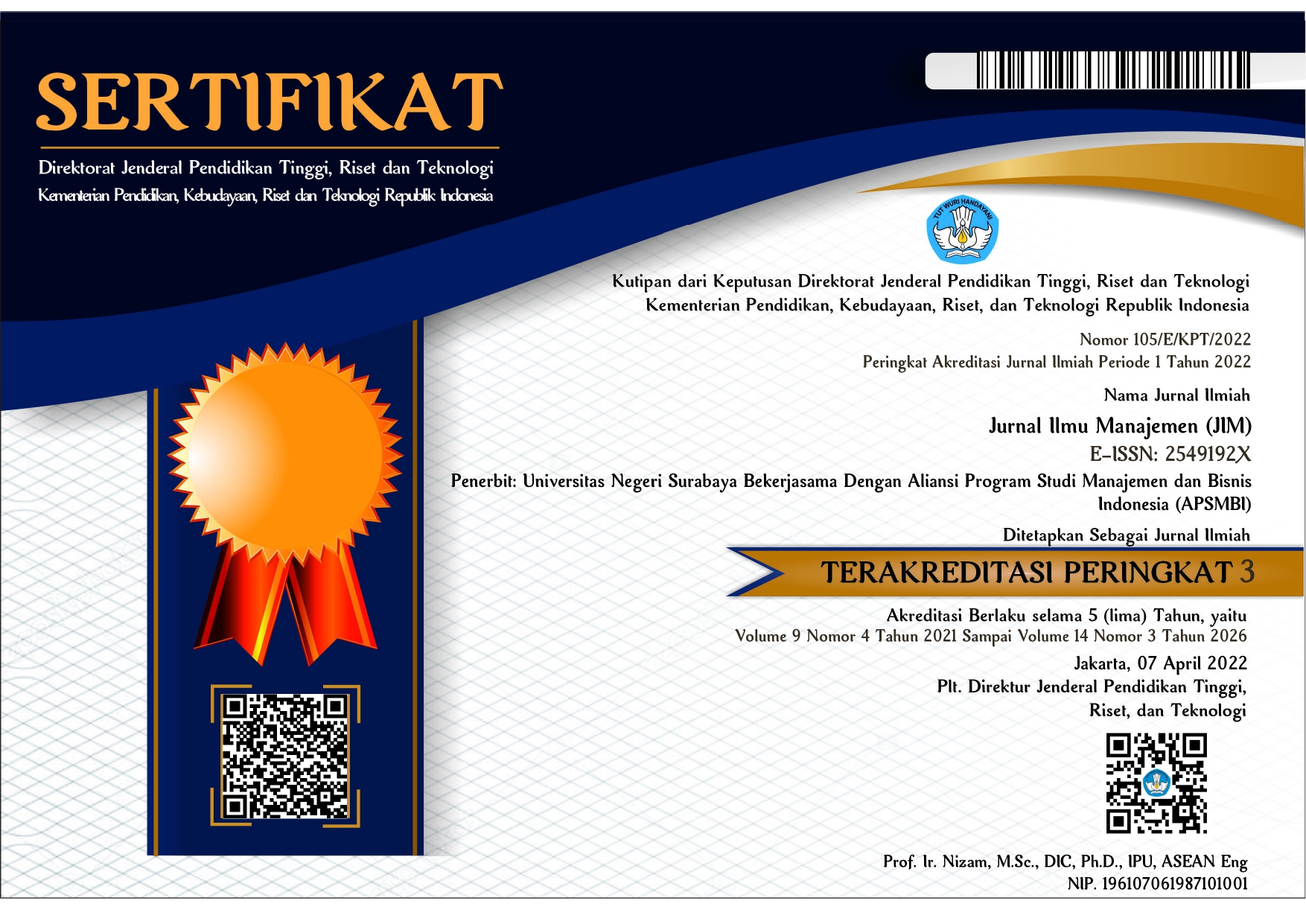Pengaruh family financial socialization, income, self-control dan financial attitude terhadap saving behavior generasi sandwich
DOI:
https://doi.org/10.26740/jim.v12n1.p71-82Keywords:
Family Financial Socialization, Financial Attitude, Income, Saving Behavior, Self-ControlAbstract
This study examines the influence of Family Financial Socialization, Income, Self-control, and Financial Attitude on Saving Behavior of the Sandwich Generation in Surabaya. The data collection technique was carried out using purposive sampling with a total of 200 respondents. Questionnaires were distributed online and offline to minimize misinterpretation from respondents. The results showed that the variables of Family Financial Socialization, Income, Self-control, and Financial Attitude had a positive effect on Saving Behavior of the Sandwich Generation in Surabaya. This is because, good financial socialization from parents can shape positive financial attitudes and behaviors, including saving behavior. In addition, the higher a person's income level, the higher the level of consumption and savings, due to the lack of barriers compared to low-income people. A person with good self-control will be able to avoid consumptive behavior, delay desires, determine a priority scale and focus on long-term financial goals. Financial Attitude has a positive effect on saving behavior because good financial attitudes reflect the ability to manage risk and mature financial planning.
References
Badan Pusat Statistik. (2022). Statistik Penduduk Lanjut Usia 2022.
Bloom, N. S. B. J. V. R., Adda, J., Arellano, M., Attanasio, O., Blundell, R., Cooper, R., Cummins, J., Eberly, J., Lombardi, D., Meghir, C., Nickell, S., Syed, M., Windmeijer, F., Bloom, N., Bond, S., & Van Reenen, J. (2007). Uncertainity and Investment Dynamics Uncertainty and Investment Dynamics. NBER Working Paper No. 12383. http://www.nber.org/papers/w12383
Deaton, A. S. (2005). Franco Modigliani and the Life Cycle Theory of Consumption. SSRN Electronic Journal. https://doi.org/10.2139/ssrn.686475
Katadata Insight Center. (2021). Survey Perilaku Keuangan Generasi Z dan Y. https://cdn1.katadata.co.id/media/microsites/zigi/perilakukeuangan/file/KIC- ZIGI_ Survei Perilaku Keuangan 130122.pdf
Lusardi, A., & Mitchell, O. S. (2013). The economic importance of financial literacy. Journal of Economic Literature, 52(1).
Priyadharshini, S. H. (2017). From financial literacy to financial well-being: A study of the level of financial literacy of women teaching faculty in educational institutions in Coimbatore region. Bharathiar University, 1, 17.
Sugiyono. (2013). Metodelogi Penelitian Kuantitatif, Kualitatif Dan R&D. Alfabeta.
The Global Economy. (2022). Saving, Percent of GDP in Southeast Asia. https://www.theglobaleconomy.com/rankings/savings/South-East-Asia/
Downloads
Published
How to Cite
Issue
Section
License

This work is licensed under a Creative Commons Attribution-NonCommercial 4.0 International License.
 Abstract views: 1580
,
Abstract views: 1580
, PDF Downloads: 1277
PDF Downloads: 1277










